- Home
- Geraldine Brooks
Nine Parts of Desire (Korean Edition) Page 18
Nine Parts of Desire (Korean Edition) Read online
Page 18
By the 1980s the attacks were no laughing matter. One day in 1984 a crowd of Hezbollah activists poured into the campus and planted a green Islamic flag atop one of the buildings. Sheik Fadlallah, the spiritual leader of Hezbollah, gave a speech about the prophet’s daughter Fatima and her importance as a role model for Muslim women. “It wasn’t that he said anything particularly controversial, but you can speak about the weather, and everyone knows what is meant,” says Wolfgang Kohler, a German scholar who happened to be on campus that day. To him, the message was that Hezbollah’s power extended even within the gates of the most important American institution in Lebanon.
That message was conveyed brutally in January 1984, when the university president, Malcolm Kerr, was murdered near his office by gunmen with silenced pistols. AUB faculty and staff also became kidnap victims. In 1985, in the wake of the Kerr murder, the cultural studies program came under fire again. This time the issue was the teaching of sacred texts—one of the gospels, an epistle of St. Paul, parts of the Koran—that was led by a Christian member of the faculty. “With the growth in the number offundies in the arts faculty, more and more students found it objectionable to be taught the Koran by a Christian,” Tarif Khalidi recalls. “So we decided to throw out the sacred texts, much to my regret. How can you understand, say, St. Augustine, if you haven’t read any Old and New Testament?”
Mostly, the university resisted sectarian pressures. Men and women continued to mix freely on the tree-shaded, seaside campus, and more women still wear blue jeans than veils. And that is a thorn in the side of extremists. In 1991 a powerful bomb tore the heart out of the campus, leaving a pile of rubble beneath the gate inscribed with the university’s motto: “That they may have life and have it more abundantly.”
Tarif Khalidi has no doubts about where he and his colleagues stand with fundamentalists, both Christian and Muslim. “I have reason to believe they hate our guts. I know myself I set out consciously to sow doubt in their minds.” One area in which he likes to sow doubt is the role of women. His mother was one of the first Arab women to appear in public without the veil. “She was always reading the Koran and shaking her head,” he recalls. “The line about ‘men are in charge of women’ used to make her really angry.”
To go from the liberal, tolerant campus of the AUB to the gates of the Islamic University of Gaza feels like traveling backward in time. In fact, it is the Gaza campus that offers the more accurate vision of the future as Islamic groups gain increasing influence.
The campus of the Gaza university is split down the middle, with one section for men and one for women. When I visited the women’s campus in the spring term of 1993, I wore a scarf and a loose-fitting, long-sleeved ankle-length dress, since I knew the institution strictly enforced hijab. But my arrival at the women’s gate caused a flurry anyway. “We have to find you a jalabiya,” explained Asya Abdul Hadi, a recent graduate, pointing to her own neck-to-toe button-through coat. “Even on the women’s campus, we have men professors.”
Eventually, someone found a baggy blue serge garment that belonged to a student at least five inches taller than I. Grabbing a fistful of fabric so I could walk, I tottered after Asya into the high-walled campus and past a jumble of low, asbestos-roofed huts.
What Berkeley was to the antiwar movement of the sixties, the Islamic University of Gaza is to the holy-war crowd of the nineties. Most of the campus supports Hamas, the Islamic group that calls for a war to the death against Israel. The university’s militance was so menacing to the Israelis that the army declared the campus a closed military zone from 1987 to 1991 and hauled most of the faculty and a large swatch of the student body to prison.
We wandered to the students’ common room, where a few women sat sipping Cokes and chatting. All of them wore jalabiyas in dull shades of brown, olive or navy. Asya introduced me to some of her friends who worked in the university administration. I asked if I could meet some of the women professors as well. “We don’t actually have many women professors,” said Majida Anan, a thirty-year-old administrator. “The priority here is for men to teach, because the man is the one who needs a career. The woman will be married and her husband will take care of her. And besides, if the university hires a woman, she can only teach here, on the women’s campus, whereas a man can teach both here and across the street with the men. When we achieve our Islamic state there won’t be any mixing at all.”
Khomeini’s daughter Zahra taught philosophy to mixed classes at Tehran University. I asked Majida her opinion of that. “There are no opinions in Islam,” she responded brusquely. “Islam says that men and women can mix if it is absolutely necessary. If there is no necessity, then they mustn’t do it.”
I’d hoped to find something different at Gaza University—perhaps the emergence of an Islamic feminism. Palestinians had always been among the most progressive on women’s issues, and I thought the fusion of that spirit with militant Islam might produce something interesting.
But in Gaza the militants had latched onto a brand of Islamic radicalism that threatened to do worse than set the clock back for Palestinian women. What Majida was proposing had never been part of Palestinian culture. Instead, her ideas were imports: they had “Made in Saudi Arabia” stamped all over them.
Hamas devotes two articles of its thirty-six-article charter to the role of Muslim women. Women, it says, “manufacture men and play a great role in guiding and educating the [new] generation. The enemies have understood that role, and therefore they realize if they can guide and educate [the women] in a way that would distance them from Islam, they would have won that war. Therefore you can see them making consistent efforts by way of publicity and movies, cur-riculi [sic] of education and culture, using as their intermediaries their craftsmen who are part of the various Zionist Organizations which take on all sorts of names and shapes such as: the Free Masons, Rotary Clubs, gangs of spies and the like…. Therefore, we must pay attention to the schools and curriculi upon which Muslim girls are educated, so as to make them righteous mothers, who are conscious of their duties in the war of liberation. They must be fully capable of being aware and of grasping the ways to manage their households. Economy and avoiding waste in household expenditures are prerequisites to our ability to pursue our cause….”
When I’d first visited Gaza in 1987, girls, unveiled and wearing blue jeans, had been in the streets alongside the youths, throwing stones at Israeli soldiers. Mothers had been right behind them, ready with wet cloths or cut onions to counter the effects of tear gas. Women had gained stature from their role in such protests. Now, thanks to Hamas, women had been sent back home, to manufacture male babies and avoid waste in household expenditures. “The struggle has changed,” said Asya, a tall, intense woman with large dark eyes and heavy brows. “Throwing stones, it’s for kids now. The activists who have real weapons don’t stay in their homes; they are always moving from place to place, sleeping here and there. A woman cannot do that.”
The struggle had changed, and so had Gaza. Driving from the huge military roadblock that divides the Gaza Strip from Israel, I hadn’t seen a single unveiled woman. “There is no coercion,” said Majida. I gazed down at my dowdy serge sack. “Of course, we can impose it here, inside the university. But outside we don’t impose it. The relationship is with God and each woman can decide for herself.”
I sipped my Coke and said nothing. I had been in the emergency room of a Gaza hospital when a young Palestinian nurse came in, shaking, her uniform covered in wet, brown stains. “It was the boys in the market,” she said. “They told me to cover my head. I told them I was Christian, but they said it didn’t matter. They said, ‘The Virgin Mary covered her head, so why not you?’ They threw rotten fruit at me and told me next time it would be acid.”
Most of the classes were finished for the day. If I wanted to sit in on a women’s religion class, Asya told me, I’d have to come back in the morning. “Why don’t you stay with me tonight?” she said.
I hes
itated. “It’s too much trouble for you to put me up,” I said.
“What’s the matter?” she laughed. “Are you afraid to stay in the camps? We are hospitable people here.”
I was a bit nervous. That week, an Israeli lawyer working on development projects in Gaza had been hacked to death with an ax as he met with his Palestinian clients. My journalist colleagues in Jerusalem had warned against even staying in a Gaza hotel. “Word gets around that you’re there—anything more than one night is definitely unsafe,” one journalist said.
I told Asya that I’d be delighted to stay with her.
She walked ahead of me to the gatehouse, where I would have to hand back my long robe. “By the way,” she said over her shoulder, “what is your religion?”
“I’m Jewish.”
Asya spun around. Her mouth narrowed to a thin line. Her eyes darted across my face, then drifted off to scan the horizon. I tried to read her expression. Angry? Offended? I couldn’t tell.
I’d only lied about my religion once, just after I’d arrived in the Middle East. It left me feeling so ashamed and cowardly that I resolved never to do it again. Since then my policy had been to tell anyone who asked. Usually the people I told were intrigued rather than hostile. An interrogation usually followed: What did I think about Zionism? Did anyone in my family give money to Israel? But Asya said nothing.
I put a hand on her arm. “If you’d rather I stay at the hotel, I’ll understand,” I said.
“No,” she said, snapping out of her trance. “You must sleep at my home.” Striding ahead of me, she hailed a cab, and we bumped over the potholes toward the refugee camp of Dier el Balah. As the taxi sped out of Gaza City and through orange groves fragrant with spring blossoms, Asya changed the subject from religion to books. Her degree was in English literature. She talked of the novels she had liked best in her studies: Thomas Hardy’s Tess of the D’Urbervilles and Jane Austen’s Pride and Prejudice. I smiled. It was hard to think of two Western books more in tune with an Islamic world view than Hardy’s tale of a woman ruined by sexual dishonor or the Bennet sisters and their parlor-based quests for suitable spouses.
Asya’s home wasn’t anything like the cramped hovels of the camps. It stood right at the edge of Dier el Balah, where the claustrophobic, ill-drained alleys opened to farmland and the sweet scent of the sea beyond. The house was solid, generously built, and walled off from the street with a high, graffiti-covered brick fence. Asya lived with her widowed mother, a stooped, potato-shaped, uneducated woman who seemed more than a generation removed from her tall, intellectual daughter. Two younger sisters, a brother and his wife also shared the house. Asya’s younger brother was in prison, accused of being an activist of Hamas. The others were scattered across the map of the Palestinian diaspora. One was a Palestine Liberation Organization fighter in Iraq, one a teacher in Saudi Arabia, one a worker in Greece. Diaspora remittances had built the house.
The brother she lived with usually worked as a laborer in Israel, but for several weeks, because of a series of murders by Palestinians,Israel had barred Palestinians from Gaza and the West Bank from going to their Israeli jobs. That left Asya, who worked as an assistant to a Palestinian journalist, as the family’s main breadwinner. When she walked in the door, her mother and little sisters hovered around her, bringing tea, a change of clothes, a hairbrush, bustling to serve her with a respectful attentiveness I’d usually seen lavished only on men.
Asya threw off her hijab, pulled on leggings and fluffed out her shoulder-length hair. When her sister brought her a knitted jersey, she pushed it away, asking in Arabic for a prettier one. The sister returned with a black polished-cotton smock with maroon flowers hand-painted around the hem. “You see,” she said, “I look a lot different now.” She did, of course. She had high cheekbones that were lost behind the scarf, and a lithe, athletic figure. I realized I’d disappointed her. She’d expected a compliment along the lines of the old black and white movies where the secretary lets out her hair and takes off her glasses: “Why, Miss Asya, you’re lovely!” But I had become too used to these kinds of transformations to be surprised by them anymore.
When her sister-in-law brought supper, it was a collection of Egyptian staples: foul, tamiyya and molokiyya—mashed beans, fried chickpeas and an okralike green. Egypt had ruled Gaza between 1949 and 1967, and the Egyptian influence remained strong. Squatting on cushions, we scooped up the various vegetables on flat bread that Asya had baked before leaving for work that morning.
Asya usually slept in the women’s reception room, which she shared with her younger sisters, but tonight she decided we would have a room to ourselves. She dragged two thin mattresses into a large salon, empty but for a closet against one wall. My instinct would have been to spread the mattresses out, to give us each a measure of privacy and personal space. But Asya placed both mats in one corner, side by side, almost touching.
Asya reached for her radio and twirled the dial. I smiled as I recognized my own habit of reaching for the radio last thing at night and first thing in the morning, to catch the news. Through the static, she found, in turn, the BBC’s Arabic service, Cairo’s Voice of the Arabs, Radio Monte Carlo. She frowned intently as she recognized a voice she knew: the spokesman for the Hamas activists deported to Lebanon by the Israelis. In heated tones, he was denouncing the resumption of peace talks between Israel and the Palestinians. A peace agreement, he said, would open the bab al fitna, the door to civil war. Asya nodded. “He’s right. Hamas will never accept such an agreement.” But when Arafat did sign a peace agreement that fall, no civil war broke out between Hamas and the PLO. While opposing the pact, Hamas vowed it wouldn’t shed Palestinian blood. Instead, the Islamists stepped up their attacks on Israelis, and waited for the deal to founder.
As the news ended, Asya rose and turned out the overhead light. She left a small night light glowing in the corner. In the semidark, we chatted in whispers, like teenagers at a pajama party.
Asya had become religious because of the example of her younger brother—the jailed Hamas activist. She had begun to wear hijab ten years earlier, at the age of nineteen. “Everyone was so surprised,” she said. “It was, ‘Why is Asya wearing that?’ You see, this was a long time before the Islamic movements became very strong here, as they are now. Before I put on hijab, I used to be afraid of everything; afraid of ghosts, afraid of being alone in a room. When I put it on, the fears vanished. Now I know that this life is just a game, a house for testing people. Once you submit to that, there is nothing in this life that can frighten you.”
Asya had just won a British Council scholarship to study journalism in London. “Do you know any journalists who wear hijab?” she asked. I said I couldn’t think of any in the mainstream media, except in Iran, where there were women TV crews, sports reporters, photojournalists.
“Perhaps I will be the first one in London,” she said.
Being twenty-nine and unmarried made Asya unusual in Gaza. She had already been through the initial stages of a number of proposals. “First, his mother and sister come to visit, to get a look at me out of hijab. If they admire me, they say they’d like to bring their son to meet me. But I say, ‘Not so fast.’ First, I must know, is he religious? What is his work? If he prays and he has a good job, I send somebody to ask his neighbors about him; friends bring me detailed reports. In most cases that’s enough: I say to his mother, ‘Don’t bother to bring him, I’m not interested.’ “
Because she worked, she also had the opportunity to meet men by herself, unfiltered by the rigmarole of matchmaking. But she ruled out anything like a Western-style romance. “The first time a man says to me that he likes me, that will also be the last time,” she said. “I will tell him, ‘Don’t say these words to me. Here is the name of my brother. Go and see him with what you have to say.’ “ After Asya had interviewed for her job with the Palestinian journalist, her brothers conducted their own interview of her prospective employer to make sure that he and his office were
suitable for their sister. They were. Her boss, himself a devout Muslim, worked out of his home with his wife and kids underfoot at all times, acting as chaperons.
Asya lay on her back with her hands linked behind her head, continuing her monologue. “Actually, I’m not very interested in men. Only to have babies.”
Was this, then, the logical end to the ideals of segregation? A profound rejection of the opposite sex? As I lay there, listening to Asya, I thought of all the smart young Islamic women I knew: Hamideh, my translator in Iran; Nahid, the former medical student and one of the four or five most beautiful women I’d ever met; Hadra, the soldier in the Emirates; a Kuwaiti political activist, a Jordanian journalist, a Kurdish teacher—all of them were single, long after the normal marriage age for women in their societies. And all of them, now that I thought about it, had talked about the problems of meeting men that they could talk to, who understood them, that they could trust.
“Yes, yes,” Asya was saying, as if she had followed my thoughts. “It would be very nice to have a good relationship with a man that you marry, but that’s not so easy with Eastern men.” It wasn’t, she stressed, the Islamic part of their heritage that made them difficult. “I would like to marry an Islamic preacher—a Western Islamic preacher.”
“Good luck,” I said, and we both giggled.
Asya turned on her side to face the wall. I thought she was ready to sleep. I rolled over myself and was almost dozing when she spoke again, her face still turned away from me. “Every time, when someone comes here to research about Islam, it turns out they’re Jewish. Why do you think that is?”
“I don’t know,” I said. I really didn’t. My interest in Islam had everything to do with being a woman and zero to do with being a Jew. But I knew what she meant. Many of the Western reporters in the Middle East were Jews. “Perhaps it’s because Jews grow up more interested in Middle Eastern issues,” I said. “Or maybe it’s because Jews and Muslims are fighting each other here, and Jews think understanding Islam might help find ways to solve the conflict?” Asya was silent. “Perhaps,” I mused, “some of them are convinced that Islam is dangerous, and they come here to find evidence to support that view.”

 Year of Wonders
Year of Wonders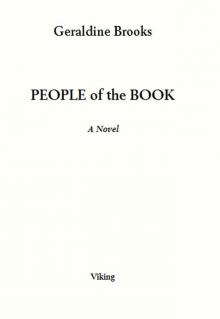 People of the Book
People of the Book The Secret Chord
The Secret Chord Foreign Correspondence
Foreign Correspondence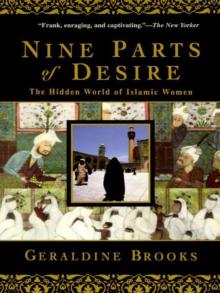 Nine Parts of Desire (Korean Edition)
Nine Parts of Desire (Korean Edition) Caleb's Crossing
Caleb's Crossing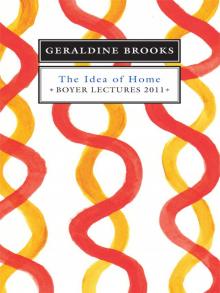 The Idea of Home
The Idea of Home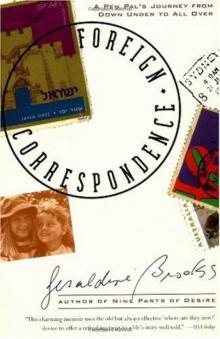 Foreign Correspondence: A Pen Pal's Journey
Foreign Correspondence: A Pen Pal's Journey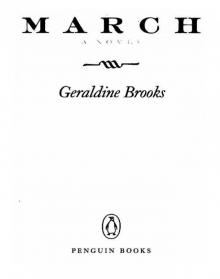 March
March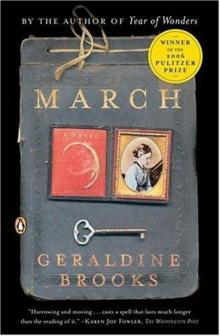 March: a novel
March: a novel The Best American Short Stories® 2011
The Best American Short Stories® 2011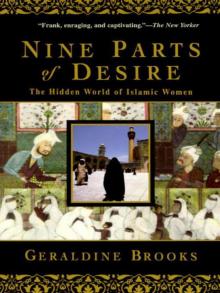 Nine Parts of Desire
Nine Parts of Desire